PsychNewsDaily Publishers
100 Summit Drive
Burlington, MA, 01803
Telephone: (320) 349-2484
PsychNewsDaily Publishers
100 Summit Drive
Burlington, MA, 01803
Telephone: (320) 349-2484
Proper wine storage involves maintaining consistent temperatures, keeping corks moist, avoiding light exposure, and using airtight stoppers to preserve flavor and freshness.
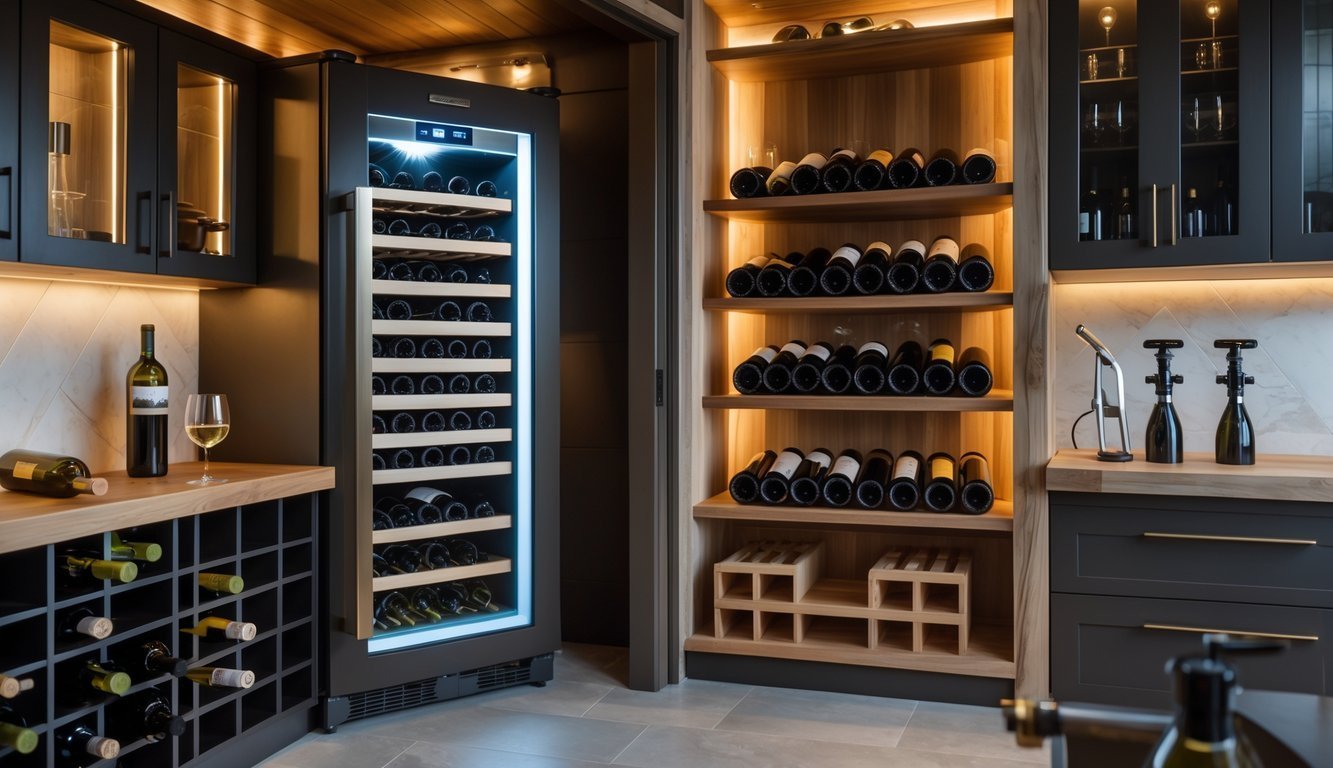
Storing wine the right way really keeps the flavor and freshness you love in every glass. Whether you’ve got just a couple of bottles or a bigger stash, how you store them can totally change how long they stay good.
These wine storage hacks will help you keep your bottles tasting great longer—no fancy gear needed. With a few simple tricks, you can stop your wine from spoiling and enjoy it at its best anytime.
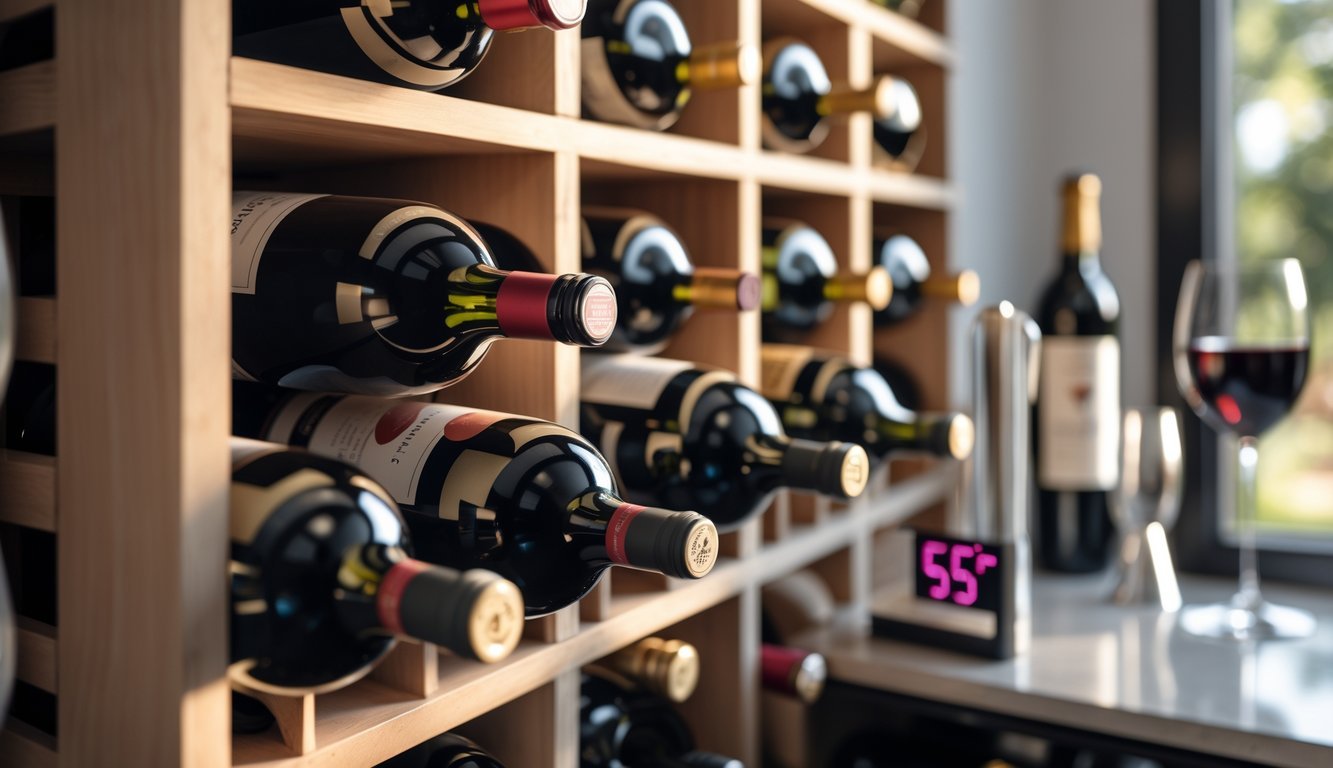
If you keep your wine at about 55°F (13°C), you protect the flavor and aroma for longer. This temperature slows aging but doesn’t get so cold that it hurts the wine.
Try to avoid big temperature swings. When wine gets too hot or too cold fast, it can spoil or taste weird.
Look for a spot in your home where temps stay steady. No wine fridge? A cool basement or closet does the trick.

Lay your wine bottles on their sides. That way, the wine touches the cork and keeps it moist.
A moist cork stops air from sneaking into the bottle. If the cork dries out, it shrinks and lets air in, which can mess up your wine by oxidizing it.
Storing bottles flat keeps the cork sealed and happy. This tip’s especially helpful if you plan to age wine for a while.
Standing bottles upright makes corks dry out faster, which can ruin the wine. Just keep them on their sides—it’s easy and works.
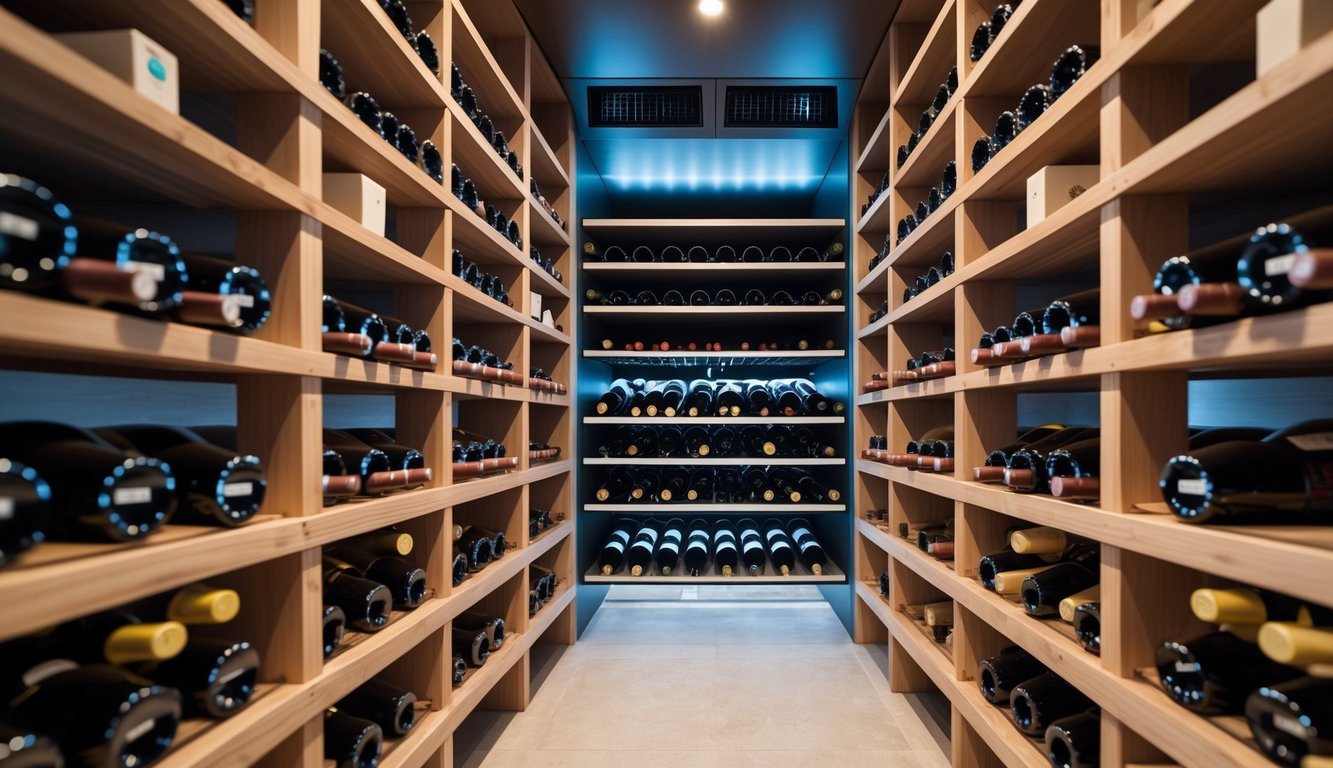
Keep your wine away from direct sunlight. Sunlight can cause chemical changes that ruin the flavor over time.
Even dark glass bottles aren’t totally safe—UV light can still break down important stuff in the wine.
Stash your bottles in a dark spot, like a closet or cellar. If you use a wine fridge, pick one with UV-resistant glass doors.
Don’t put your wines near windows or strong lights. This little move helps keep your bottles tasting fresh.
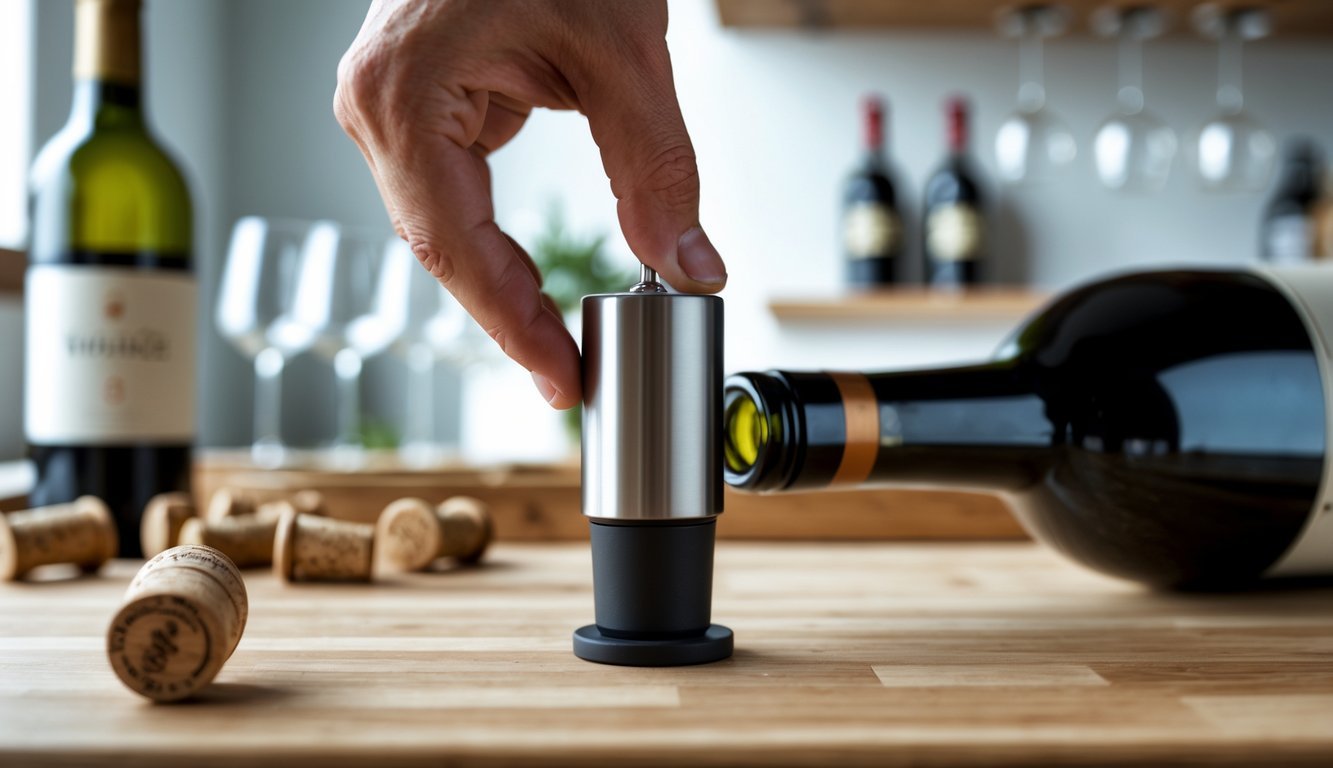
Once you open a bottle, air starts mixing with the wine. That’s when oxidation changes the taste and freshness.
A vacuum wine stopper helps by sucking out the air inside the bottle. Pumping out the air slows oxidation and keeps your wine tasting good for several days.
Most vacuum stoppers are easy to use and you can reuse them. Just pop the stopper on and pump. You’ll save wine and enjoy it later.
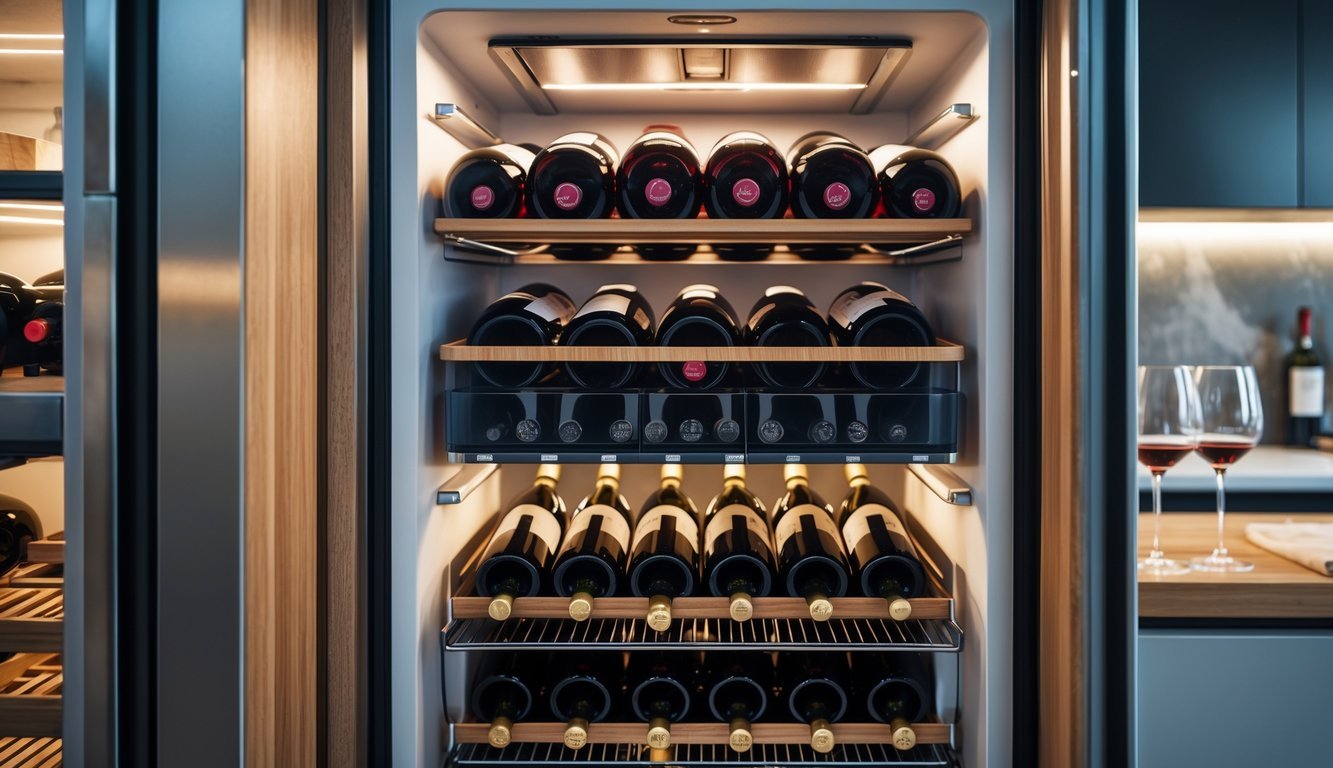
After you open a bottle of red, stick it in the fridge. The cold slows down the spoiling process.
Before pouring, take it out about ten minutes early. Letting it warm up a bit brings out the flavors and aromas.
Don’t leave opened reds in warm or sunny spots. This habit keeps your wine tasting better for days after opening.
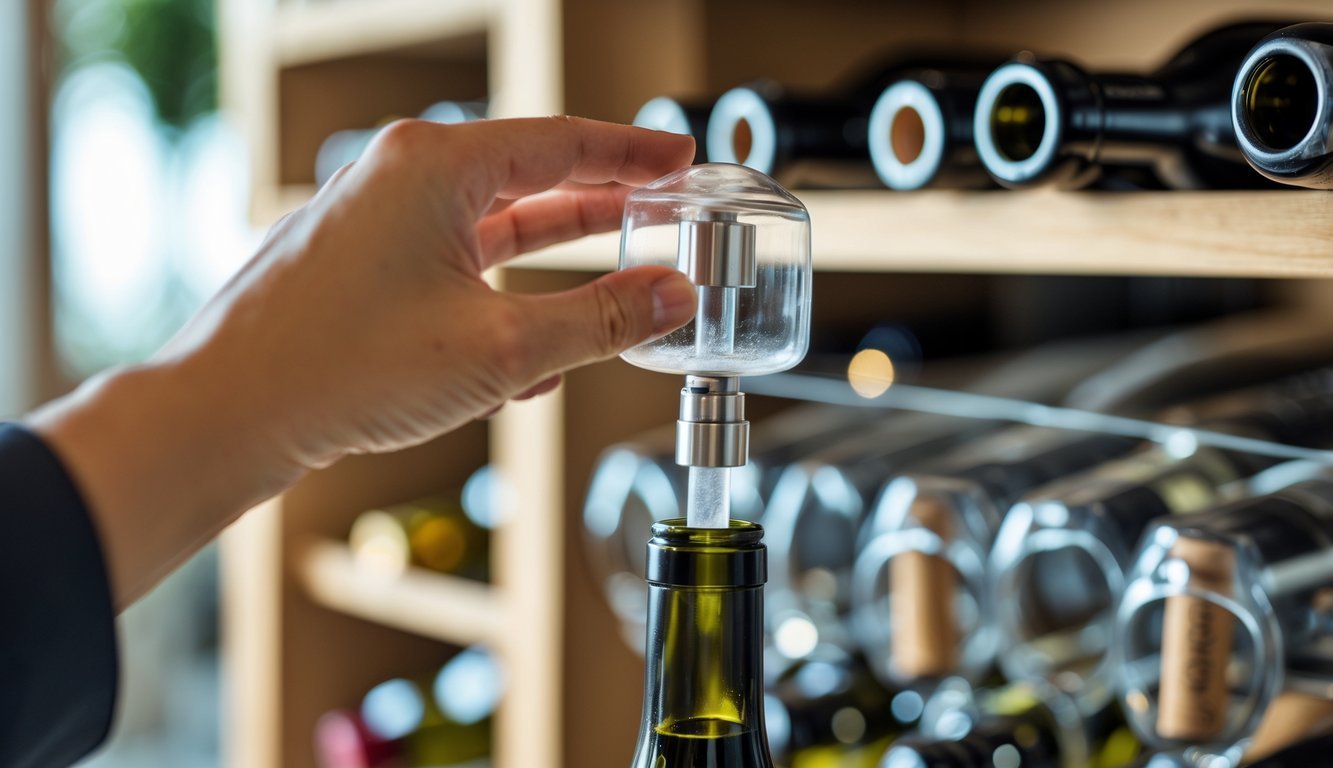
Air can change an open bottle’s flavor fast. Inert gases like argon help keep your wine fresh for longer.
Argon is heavier than air, so it settles over the wine and blocks oxygen. It doesn’t react with your wine, so the taste stays the same.
Lots of wine lovers and restaurants use argon because it’s safe and it works. You can get simple spray systems—just give your bottle a quick shot and you’re good for days or even weeks.
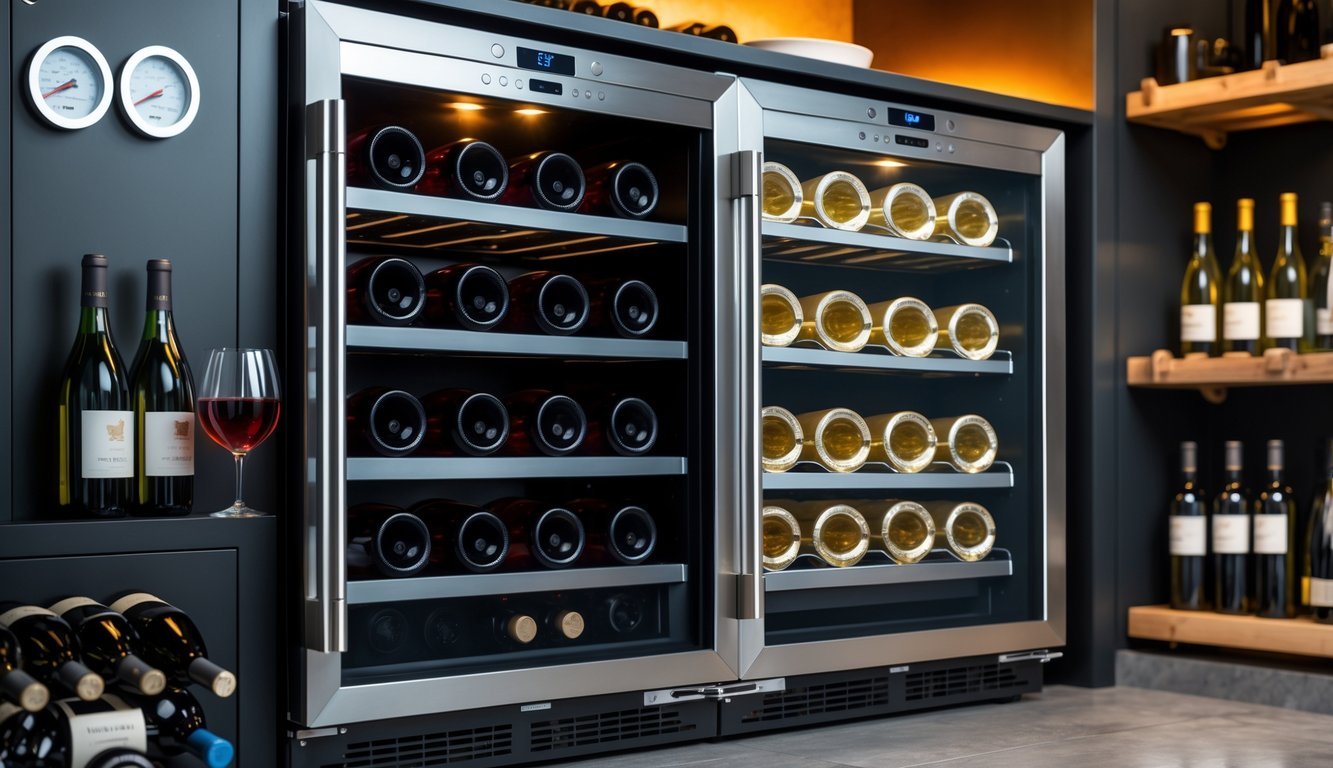
A dual-zone wine fridge keeps your reds and whites at their ideal temps. It’s got two compartments, each with its own setting.
You can chill whites cooler and keep reds a bit warmer, which helps preserve flavors and aromas better than a one-temp fridge.
Dual-zone fridges make it easy to grab any bottle without worrying about storage temps. If you like both reds and whites, it’s honestly a game changer.
Getting one can really improve your wine experience. Plus, it fits nicely in your kitchen or dining space.
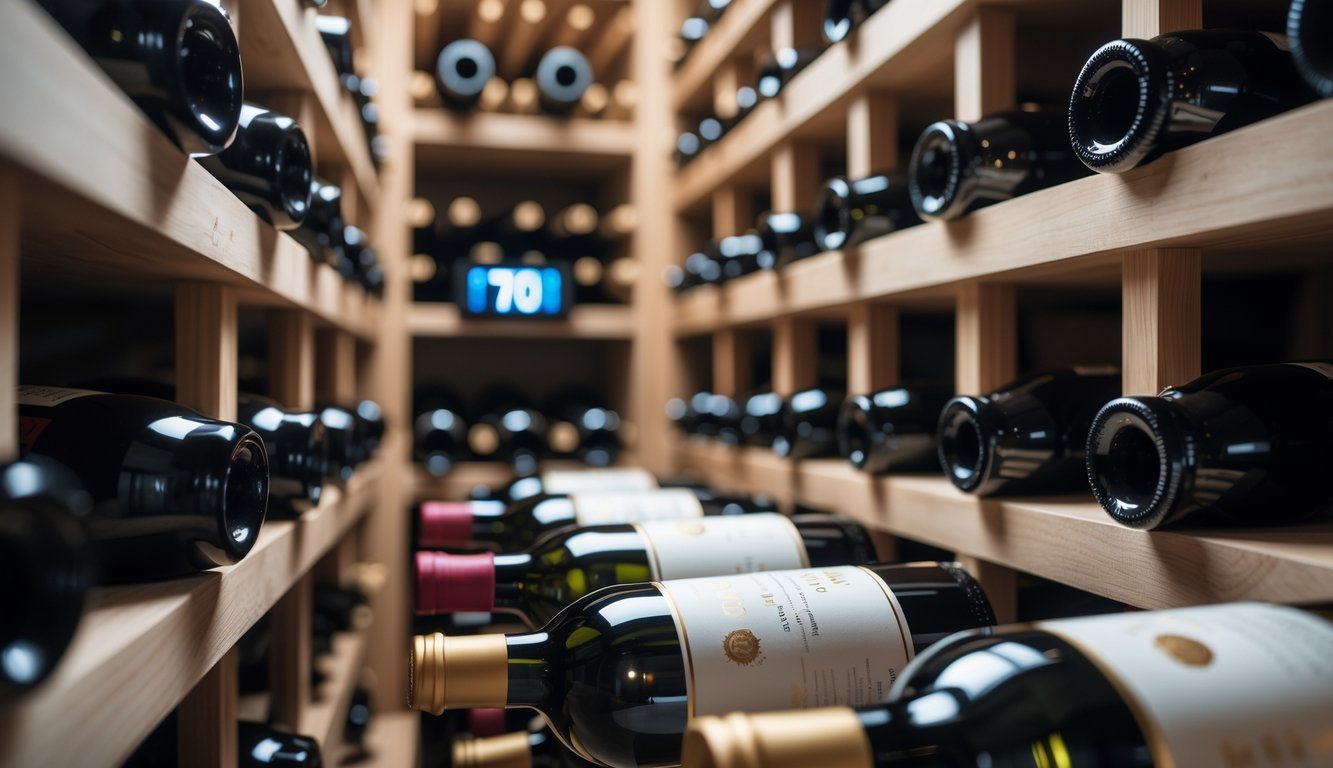
Aim for about 70% humidity in your wine area. This keeps corks moist and flexible.
If the air’s too dry, corks dry out and let oxygen in, which isn’t good for your wine. Too much humidity, though, can cause mold.
A steady 70% is the sweet spot. Use a hygrometer to check humidity and keep things balanced.

Keep your wine away from appliances that give off heat or shake things up. Stuff like fridges, washers, and ovens can cause temp swings.
When temperatures jump around, wine expands and contracts. That can mess up the cork and let air in.
Try to store bottles in a cool, steady spot. A wine fridge or a dark, quiet cellar is ideal.
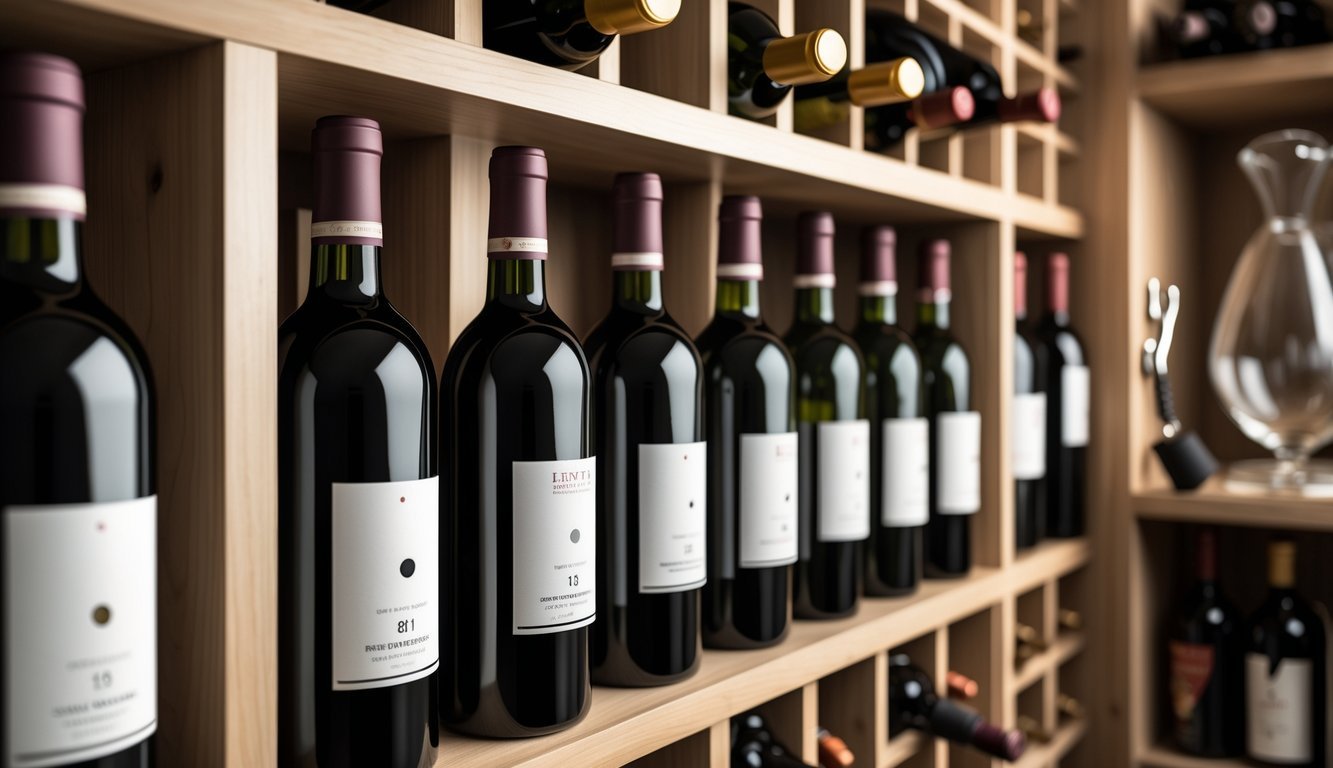
When you open a bottle, grab a small label and jot down the date. Stick it right on the bottle.
Tracking opening dates helps you drink wine while it’s still fresh. Wine starts to lose flavor after just a few days.
Labels also help you pick which bottle to finish first. It’s a simple way to avoid wasting good wine.
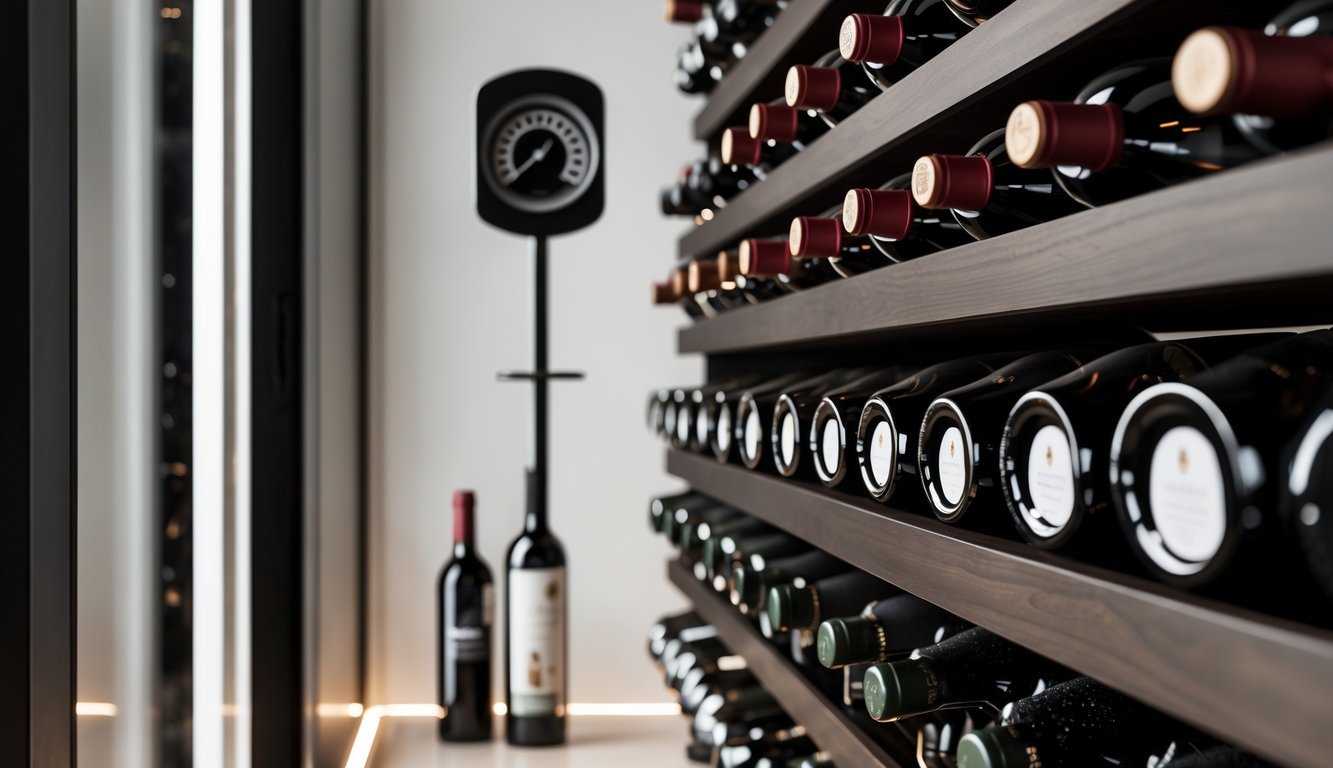
Storing wine well means getting the conditions right so your bottles taste great for longer. Pay attention to light, movement, temperature, and moisture. These all work together to keep wine from getting ruined.
Wine really reacts to its environment. Light can cause chemical changes and ruin both flavor and color.
That’s why it’s smart to keep bottles in the dark or use a wine cabinet with UV protection.
Movement is another issue. Shaking or bumping wine can speed up aging and make it taste off.
Keep bottles still, especially if you’re aging them. And don’t forget position—store bottles on their side to keep corks moist.
Dry corks shrink and let air in, which spoils wine. Once a bottle’s open, air exposure is a big risk. Airtight stoppers help slow oxidation and keep wine fresh.
Temperature control is huge. Try to store wine around 50-59°F (10-15°C). If it’s too warm, wine ages too fast and loses flavor.
Too cold? It can freeze or taste weird. Humidity should sit between 60-70%. Low humidity dries corks and lets air in.
High humidity means mold and damaged labels. A humidifier or dehumidifier can help keep things steady.
Avoid rapid temperature changes. When wine expands and contracts quickly, it can break seals and ruin the bottle.
Controlling temp and humidity gives your bottles a stable home to stay fresh and develop their flavors.
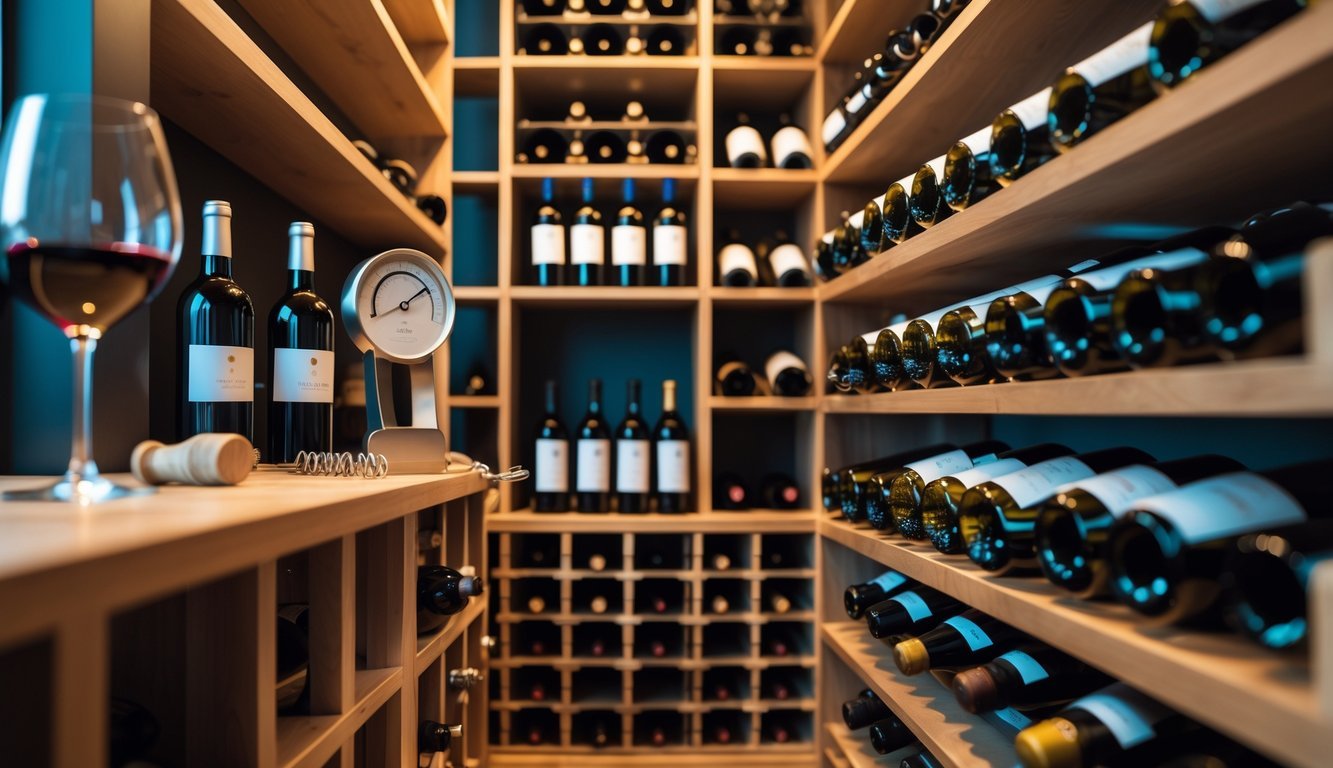
Keeping wine in the right conditions really preserves its taste and quality. Mistakes like storing bottles upright or exposing them to light can change the wine and spoil it.
Paying attention to these details helps your collection stay fresh.
Don’t store wine bottles standing up for long. The cork needs to stay moist to keep air out.
If the cork dries, it shrinks and lets oxygen in, which ruins the wine. Storing bottles on their side keeps the cork touching the wine.
That prevents the cork from drying out and shrinking. It also keeps the seal tight, keeping air away from the wine.
If your bottles have screw tops, position isn’t such a big deal. But for corks, laying the bottle flat is the safest move. This small habit really helps your wine last.
Wine really doesn’t get along with light—especially sunlight or those harsh artificial bulbs. When you leave wine out where it gets hit by light, it can pick up some pretty weird flavors people call “lightstruck.”
UV rays kick off chemical reactions in the wine, messing with its taste and aroma. It’s not something you want if you care about how your wine actually tastes.
So, what can you do? Store your wine in a cool, dark spot if you can. Try not to leave clear bottles sitting in direct sunlight or under bright lights.
If you absolutely have to keep your wine out where it’s bright, maybe wrap the bottle in a cloth, or just pop it in a box. That little bit of effort can make a big difference.
Cutting down on light exposure helps your wine hang onto its original flavor and smell. It’s a pretty easy way to protect your collection—even if you don’t notice the damage right away.